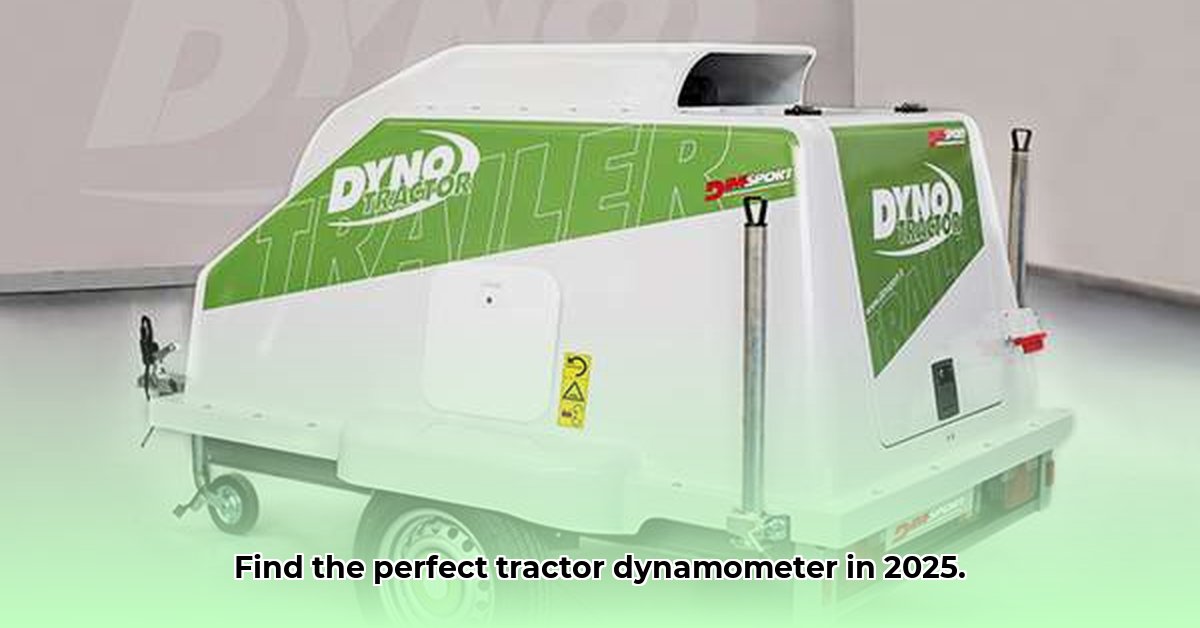
Understanding Your Dealership's Needs: A Crucial First Step
Before exploring specific dynamometer models, let's define your dealership's requirements. This initial assessment is crucial for making a cost-effective and long-term viable decision. Think of it like choosing the right tools for a specific job; the wrong tool makes the job harder and less efficient.
What's your budget? A clear budget helps define realistic options. High-end dynamometers offer advanced features but command higher prices. What's your testing frequency? A high-volume dealership needs a durable, high-capacity system, while a lower-volume operation might need a simpler, more affordable model. What horsepower range will you be testing? Ensure your chosen dynamometer exceeds the horsepower of your highest-output tractors, ideally with some headroom for future expansion. Finally, how important is software integration? Seamless integration with existing farm management software can significantly improve efficiency. Ignoring this factor can lead to significant data management challenges. For Kubota tractor data, see this helpful resource.
Types of PTO Dynamometers: A Comparative Overview
Power take-off (PTO) dynamometers measure tractor power output. Two primary categories are air-cooled and water-cooled systems. Air-cooled dynamometers are simpler and require less maintenance, but may be limited in high-power applications, or might overheat frequently when faced with high loads. Water-cooled systems excel in high-horsepower applications, providing superior cooling capacity, but necessitate a continuous and reliable water supply and potentially more complex maintenance. Accuracy is another critical factor; higher accuracy systems provide more reliable test results, although precision often increases the purchase price. Software integration capabilities vary widely, influencing data management and analysis capabilities. Some systems offer advanced data logging, cloud connectivity, and comprehensive analytics tools, while others provide basic data recording.
Here's a table summarizing key differences:
| Feature | Model A (Example) | Model B (Example) | Model C (Example) |
|---|---|---|---|
| Horsepower Capacity | 500 hp | 1000 hp | 1500 hp |
| Cooling System | Air-cooled | Water-cooled | Water-cooled |
| Accuracy | ±1% | ±0.5% | ±0.2% |
| Software Integration | Basic | Advanced | Advanced w/ Cloud Data |
| Approximate Price | $10,000 | $25,000 | $40,000 |
Selecting the correct dynamometer involves a careful balancing act between cost, performance and maintenance requirements. Isn't it important to choose a system that fits your budget while meeting your performance goals?
Choosing Your Dynamometer System: A Step-by-Step Guide
This step-by-step guide simplifies the selection process. Following these steps methodically will ensure a fitting solution.
Step 1: Budgetary Constraints: Define a realistic budget encompassing the purchase price, potential upgrades, and ongoing maintenance costs. This crucial first step will focus your selection.
Step 2: Horsepower Capacity: Select a dynamometer with capacity exceeding the highest-horsepower tractor you'll test, ideally adding a margin for future needs. Underestimating capacity can lead to future limitations.
Step 3: Evaluate Testing Frequency: High-volume testing requires a robust and durable system. Less frequent use allows for a more basic model, resulting in considerable cost savings.
Step 4: Software Integration: Assess the necessity of seamless integration with your current software infrastructure. Data management should be efficient, not an additional workload.
Step 5: Vendor Reputation and Support: Prioritize vendors with a proven track record of quality, service, and technical support. Downtime is expensive; strong support minimizes disruption.
In-Depth Model Reviews: Selecting the Right Fit
Let's examine two representative models to illustrate in-depth analysis. Remember, these are illustrative examples. Always consult the manufacturer for the latest specifications.
Model X (Manufacturer A): This model offers high accuracy (±0.5%), robust construction, and sophisticated software integration. However, it demands a more substantial initial investment and potentially more complex maintenance.
Model Y (Manufacturer B): This model offers a lower price point, user-friendly interface, and basic software features. However, it sacrifices accuracy (±1%) and advanced software capabilities, potentially limiting future upgrade options.
Thorough research is crucial. Don't rely solely on vendor claims; compare specifications, seek user reviews, and consider requesting demos for hands-on evaluation.
Installation, Maintenance, and Safety: Prioritizing Safe Operation
Always adhere strictly to the manufacturer's installation instructions. Proper installation is paramount for accuracy and safety. Regular maintenance, including fluid changes, load cell calibration, and software updates, extends the dynamometer's lifespan and ensures accuracy. Remember to disconnect power before performing any maintenance or repairs. Safety is not optional; it’s a cornerstone of effective operation.
Conclusion: Making the Right Investment Decision
Choosing the correct dynamometer requires consideration of several critical factors. Prioritize your needs by defining your budget, anticipated testing frequency, and required software integration. Thorough research, including comparison shopping and seeking user feedback, is crucial for ensuring a cost-effective and long-term suitable investment. Remember that this is an investment in the efficiency and profitability of your dealership. A well-chosen dynamometer system will enhance operations and ensure precise, reliable tractor power testing for years to come.